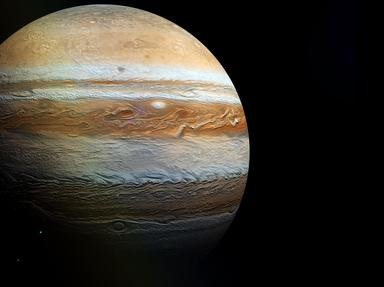Quiz Answer Key and Fun Facts
1. Jupiter is predominantly composed of hydrogen. What gas makes up around a quarter of its mass?
2. The Great Red Spot of Jupiter is a constant storm on the planet, bigger than the Earth. How many miles an hour does this storm rage between?
3. The Galileo space probe was sent into orbit in 1989. What year did it reach Jupiter?
4. Jupiter has 79 known moons. What is the smallest of the Galilean moons?
5. Jupiter will almost certainly become a star.
6. Which of Jupiter's moons has more craters than anything else known to exist in our Solar System?
7. Which moon of Jupiter was discovered in 2017?
8. Two moons of Jupiter have been known to orbit within the planet's main ring. They are Metis, and which of these?
9. How many miles is Jupiter from the Sun?
10. Due to its size, Jupiter has the longest day of all the planets in the Solar System.
Source: Author
LuH77
This quiz was reviewed by FunTrivia editor
rossian before going online.
Any errors found in FunTrivia content are routinely corrected through our feedback system.
